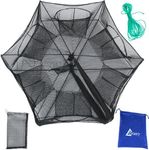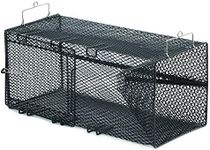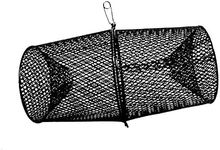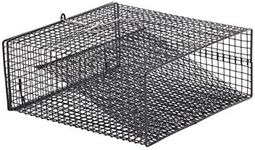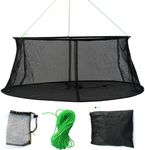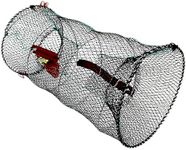Buying Guide for the Best Crayfish Traps
Choosing the right crayfish trap can make a significant difference in your crayfishing success. The right trap will depend on various factors including the type of water you are fishing in, the size of the crayfish you are targeting, and your personal preferences. Understanding the key specifications of crayfish traps will help you make an informed decision and increase your chances of a good catch.MaterialThe material of the crayfish trap is important because it affects the trap's durability and effectiveness. Common materials include wire mesh, plastic, and nylon. Wire mesh traps are durable and allow for good water flow, which can attract more crayfish. Plastic traps are lightweight and resistant to rust, making them ideal for use in saltwater. Nylon traps are flexible and easy to transport but may not be as durable as wire mesh. Choose a material based on the environment you will be fishing in and how often you plan to use the trap.
SizeThe size of the crayfish trap determines how many crayfish it can hold and the size of crayfish it can catch. Smaller traps are easier to handle and transport but may not hold as many crayfish. Larger traps can catch more crayfish at once but can be bulkier and harder to manage. If you are targeting larger crayfish, make sure the trap has a large enough entrance. Consider the size of the crayfish in your area and how many you want to catch when choosing the trap size.
Entrance DesignThe entrance design of a crayfish trap is crucial because it affects how easily crayfish can enter and how difficult it is for them to escape. Common designs include funnel entrances and one-way doors. Funnel entrances guide crayfish into the trap but can sometimes allow them to escape. One-way doors are designed to let crayfish in but prevent them from getting out. If you are fishing in an area with a high crayfish population, a funnel entrance may be sufficient. For areas with fewer crayfish or more escape-prone species, a one-way door may be more effective.
Bait HolderThe bait holder is where you place the bait to attract crayfish into the trap. A good bait holder should be easy to access and secure enough to keep the bait in place. Some traps have built-in bait holders, while others require you to add your own. Consider how easy it is to add and remove bait, as well as how well the bait holder keeps the bait in place. A well-designed bait holder can make a big difference in how many crayfish you catch.
PortabilityPortability is an important factor if you plan to move your trap frequently or transport it over long distances. Lightweight traps are easier to carry and handle, but they may not be as durable as heavier traps. Collapsible traps are convenient for storage and transport but may require more setup time. Consider how often you will need to move your trap and how much space you have for storage when choosing a trap. A portable trap can make your crayfishing experience more enjoyable and less cumbersome.
DurabilityDurability is key to ensuring your crayfish trap lasts through multiple fishing trips. Traps made from high-quality materials like galvanized steel or heavy-duty plastic are more likely to withstand wear and tear. Look for traps with reinforced corners and sturdy construction. If you plan to fish in rough waters or areas with a lot of debris, a more durable trap will be necessary. Consider how often you will use the trap and the conditions it will be exposed to when evaluating durability.
